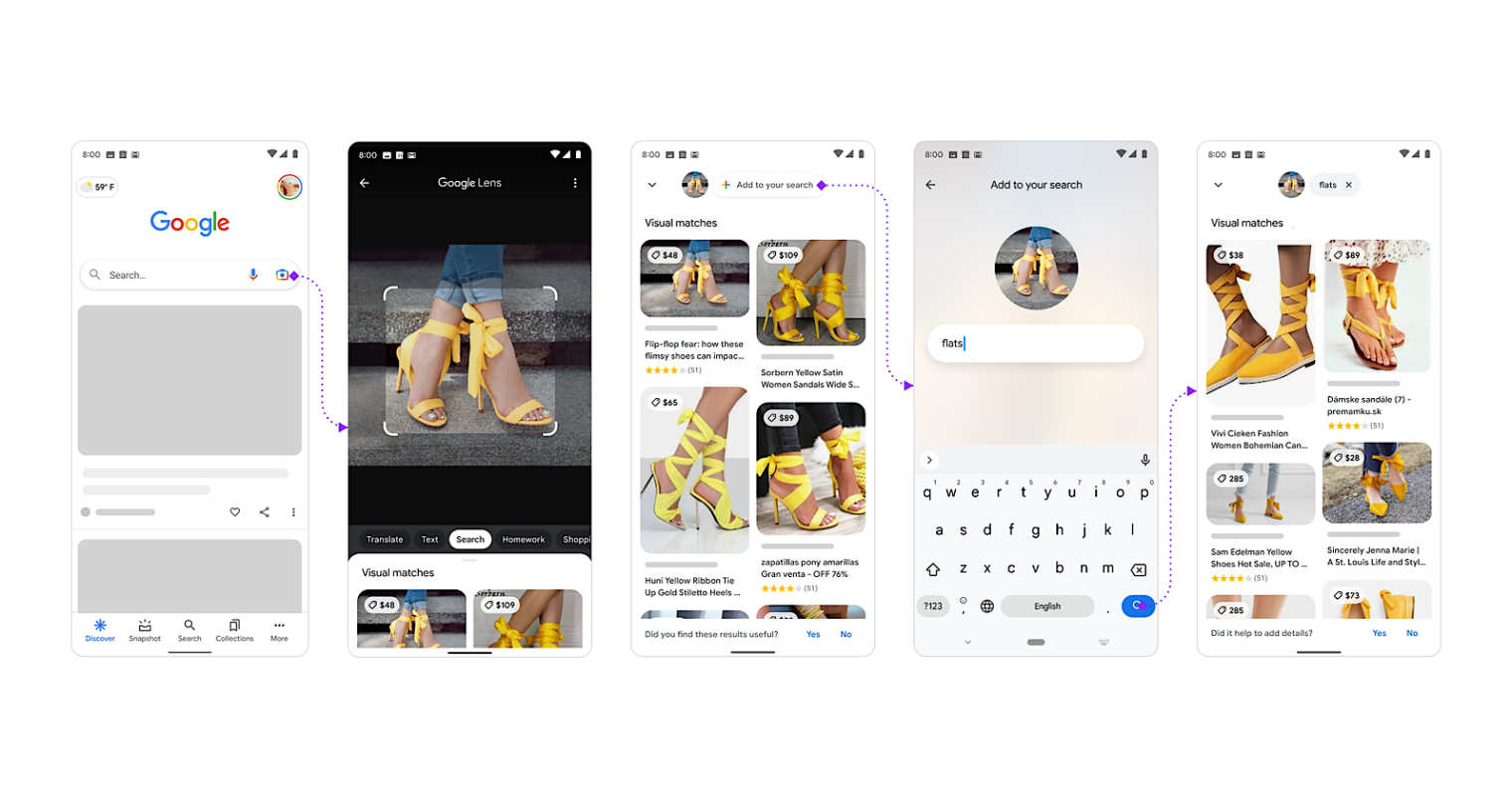Google has been around for more than 20 years and will probably stick around for the foreseeable future. And since its inception, Google has had many major and consistent updates to the way it works and the way people can use it.
And the mere fact that Google handles more than 90% of the search engine market can only mean one thing: any update to Google’s ways of working can affect how search engine optimisation (SEO) works.
Yes, the many practices of optimising your content in order to improve visibility do apply to any search engine provider. But it so happens that Google dominates the market. That means that you’re going to have to tailor your actions if you want to succeed.
So, it can only make sense that SEO practices have evolved a lot throughout the years in reaction to Google. And the latest change brought the giant search engine provider is Multisearch. Keep on reading to find out more.
What is Google multisearch?

Back in April of 2022, Google announced a brand-new feature called ‘Google Multisearch’. It was dubbed as a way to ‘go beyond the search box’ by harnessing the power of AI.
I’m sure many of you have been in a situation in the past where you needed to look for a particular product or service, but Google hasn’t been responsive. This can be the result of many things, primarily Google not indexing the website of the brand behind those products and services. Or perhaps you want to purchase a particular attachment for a phone you have but only one that’s compatible with it. Putting this into words that Google can understand can be difficult on certain occasions.
And this is where Google Multisearch comes into play. It allows users to combine words and images into one query. So, it comes as no surprise that, for the time being, Google is marketing this tool as most useful for queries revolving around decor, fashion, and styling.
But, knowing Google’s past, you can only imagine what this technology will look like in a few years.
How does it work?
So now the question is, how does this work? Well, users need to have the latest version of the Search app. Once opened, simply tap the Lens camera icon, upload an image or snap something on the spot. And then, swipe up and tap the “+ Add your search” button to add text.
Say, for example, your girlfriend has a Croton houseplant over at her place, and she has instructed you to take care of it while she’s away. Whoops! Not only have you forgotten the name of the plant but also the instructions she gave you.
Through Multisearch, you can simply take a picture of the plant and then add “how to care”, and Google will do the rest. It’ll tell you what the plant is as well as what it needs. There’s also the potential for shopping.
Instead of spending minutes or hours trying to figure out the name of a product you saw, you can simply take a picture of it and tadaa!
Near me
Google also revealed the “Near Me” feature that will be included in Multisearch. As the name suggests, this feature allows you to search for products, services or anything else via your camera but locally. For instance, you can take a picture of a specific dish and search for a restaurant near you that serves it.

How does Google multisearch affect SEO?
And now for the golden question, what does all of this mean for SEO? Well, as John Mueller from Google put it: “And from an SEO point of view that’s not really something you would do, manually to make that work”, “So it’s not that there’s like a direct effect on SEO or anything like that”.
So, in other words, there aren’t any new SEO practices in relation to Multisearch. Rather, Muller and the people over at Google recommend that you follow the general SEO best practices. That means optimising both the content and images on your website.
Indeed, Multisearch may not impact SEO activities yet, but there’s a chance that it will in a few years. What you can do for the time being is focus on the usual SEO tasks. These include writing useful and interesting blog posts, including relevant keywords and images, and more.
It’s also recommended that all images use alt tags that include your keywords. For example, you could run a phone repair shop and have a phone with a broken screen image up on your website. Your alt tag should go something like this “broken iPhone screen repair” or “broken phone screen repair”.
This helps Google to line up user queries with your website both through regular search and Multisearch.
And just like voice search, Multisearch kind of focuses on providing a more natural, human-like approach. This means that it will become more important to implement a more conversational tone in your content.
Indeed, users might soon be able to look for information about products the same exact way they do in a real-life shop situation.
Now, don’t get us wrong. We’re not saying that traditional search will disappear anytime soon. But with this ever-evolving technological world, it’s important to always stay ahead of the trends.
SEO is hard – Rockstar Marketing can make it easier
SEO is all about understanding new trends like Multisearch and adapting your strategy according to them. As a business owner, you may be too busy to take care of that yourself. Worry not, though, as we can lend you a helping hand. All you have to do is book a discovery call today.



0 Comments